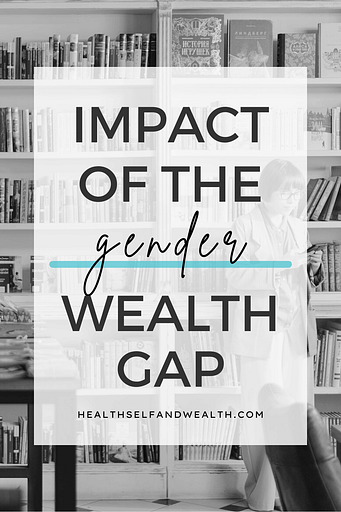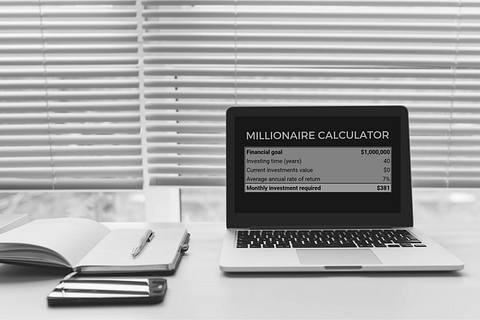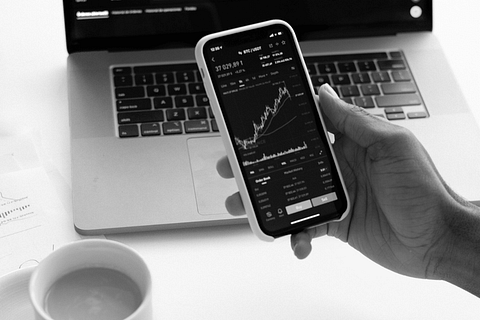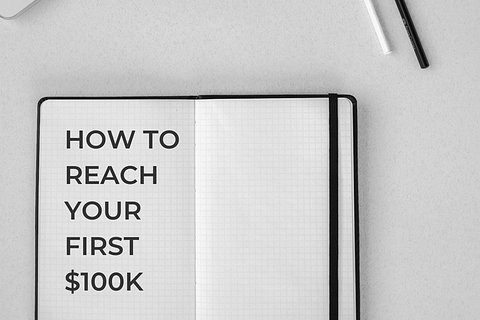
The cost of being a woman goes far beyond the wage gap, pink tax, and motherhood penalty. Systemic biases along with cultural conditioning present obstacles on a woman’s path to wealth or even financial stability. This is problematic because in today’s modern world, earning and managing money is a fundamental survival skill, like hunting and gathering was in earlier times.
Not only is money needed for survival, it also provides stability, peace of mind, freedom, and power.
A woman’s journey with money is different than a man’s. Not only are the perceptions around women and money different, all the factors mentioned above contribute to a greater problem than the wage gap: the gender wealth gap. The average woman owns ~30 cents for every $1 a man owns.
Why is that? Yes, we know about the gender wage gap, but why is the gender wealth gap so different? Here’s a deep dive into how the gender wealth gap, pink tax, and investment practices impact a typical woman’s path to wealth compared to a man’s.
This analysis is based on averages. That means every individual will have a unique financial situation. So the focus will be overall differences between the average man and women based on data-backed assumptions. Please note there are other factors that also contribute to this not fully evaluated here, like the motherhood penalty.
With that in mind, as you are reading this, focus on the gap between the man and woman in these scenarios, rather than the absolute numbers.
- How the wage gap impacts lifetime wealth
- How the pink tax further impacts lifetime wealth
- How hiring a financial advisor impacts lifetime wealth
Please note I am not a licensed financial advisor. This information is for education purposes only. Every person has a unique financial situation. The best approach will be different for everyone. Accordingly, do your own due diligence before making any financial decision.
How the wage gap impacts lifetime wealth
Meet Amanda and Brad. They are both 22 and just graduated with their bachelor degrees. Amanda’s starting salary is $50,000 and Brad’s is $62,500. This difference accounts for the wage gap where a woman earns ~80 cents for every $1 a man earns.
They both get a 3% raise every year, invest 10% of their income with a 10% average annual rate of return, and plan to retire at 61.
The only difference evaluated in this scenario, detailed below, is the impact of the wage gap.
- Amanda earns almost $1 million less ($900K) over her lifetime than Brad because of the wage gap.
- Since they were both investing 15% of their salaries, Brad only invests about $90K more than Amanda.
- But due to compound interest over time, Brad’s investments grow to $700K more than Amanda’s.
| Amanda | Brad | Difference | |
| Age | 22 | 22 | – |
| Degree | Bachelor | Bachelor | – |
| Starting salary | $50,000 | $62,500 | $12,500 |
| Annual raise | 3% | 3% | – |
| Retirement age | 61 | 61 | – |
| Total lifetime earnings | $3.6 million | $4.5 million | $900K |
| % of salary invested | 10% | 10% | – |
| Total invested | $360K | $450K | $90K |
| Avg annual rate of return | 10% | 10% | – |
| Investment value at 61 | $2.7 million | $3.4 million | $700K |
How the pink tax further impacts lifetime wealth
The first scenario is underestimating the difference because it doesn’t take into account the pink tax. The pink tax phenomenon means it literally costs more to be a woman. Want a razor? Well as a woman, the ones marketed towards you are pink. They cost more than the ones for men. AND they don’t work as well!
Accordingly to T. Rowe, men invest 2% more than women on average. So this scenario will incorporate that reality into the analysis. There are likely multiple factors contributing to this, including the pink tax. Another large contributor is men tend to have higher incomes, so they may have the means to invest more.
Regardless of the specific reasons, this is the reality for the average man and woman, so this scenario will account for it.
Meet Drake. He is very similar to Brad, except that Drake invests 2% more of his income than Brad and Amanda.
- Drake invests almost $180K more than Amanda by investing an additional 2% of his income. The difference between Drake and Amanda’s investment contributions is double the difference between Brad and Amanda.
- Drake’s investment value at retirement now exceeds Amanda’s by $1.4 million instead of Brad’s $700K.
| Amanda | Drake | Difference | |
| Age | 22 | 22 | – |
| Degree | Bachelor | Bachelor | – |
| Starting salary | $50,000 | $62,500 | $12,500 |
| Annual raise | 3% | 3% | – |
| Retirement age | 61 | 61 | – |
| Total lifetime earnings | $3.6 million | $4.5 million | $900K |
| % of salary invested | 10% | 12% | 2% |
| Total invested | $360K | $540K | $180K |
| Avg annual rate of return | 10% | 10% | – |
| Investment value at 61 | $2.7 million | $4.1 million | $1.4 million |
How hiring a financial advisor impacts lifetime wealth
Now we are getting closer to the differences between average men and women’s financial landscapes. But there’s still one more scenario I want to investigate: the reality that a woman is more likely than a man to hire a financial advisor.
Meet Cece. She hires a financial advisor who charges a 1% fee of the assets they manage. Amanda, Brad, and Drake were all managing their own investments, so they weren’t paying this fee.
At a surface level, paying 1% of your total assets may not seem like a lot. When you have $10,000 invested, that’s $100 a year. When you have a million invested, that’s $10,000 a year in fees. Most people never realize the impact paying these fees can have over a lifetime, and more often than not, there are more fees than just the 1% management fee.
We’ll account for Cece’s management fee in this scenario by subtracting the management fee from the average annual rate of return.
- Cece loses out on over half a million dollars ($600K) compared to Amanda by paying a financial advisor an annual 1% management fee.
- This fee widens the gap between Cece and Drake and now Drake has double the wealth of Cece in retirement, a $2 million difference.
- Even though women are more likely to hire a financial advisor than men, this decision can significantly reduce lifetime investment value. Even if you do outsource your investment management, you still should learn enough about personal finance to understand what’s going on.
| Cece | Drake | Difference | |
| Age | 22 | 22 | – |
| Degree | Bachelor | Bachelor | – |
| Starting salary | $50,000 | $62,500 | $12,500 |
| Annual raise | 3% | 3% | – |
| Retirement age | 61 | 61 | – |
| Total lifetime earnings | $3.6 million | $4.5 million | $900K |
| % of salary invested | 10% | 12% | 2% |
| Total invested | $360K | $540K | $180K |
| Avg annual rate of return | 9% | 10% | -1% |
| Investment value at 61 | $2.1 million | $4.1 million | $2 million |
Impact of Gender Wealth Gap Conclusion
Based on the data, it’s fair to say it’s harder for the average woman to build wealth than the average man.
- Society conditions women to be self-less. Actively trying to build wealth for ourselves can feel like it’s going against the role society taught us to play.
- We earn less than our male counterparts on average due to the wage gap. Then our products cost more because of the pink tax!
- On top of that, there are other personality traits that help men get promoted faster or earn higher paying jobs faster.
- Women are less likely to be taught investing than men.
- Additionally, women will need more money in retirement than men because we tend to outlive them by an average of 5 years!
While the analysis shows on average it costs significantly more to be a woman, perhaps up to $1.4 million more, there are still actions we can take on an individual level to improve our financial landscapes.
- We can surround ourselves with a community of women building wealth to strengthen our relationships with money. (Shameless plug for our Wealthy Women Club. All genders welcome.)
- We can learn to be our own best advocates. We can have conversations about compensation. We can negotiate our salaries and titles. We can apply for new higher paying roles and promotions.
- If we can channel just 1/8th the confidence of a Brad, then we’ll have the confidence to put ourselves out there for anything we desire. Even if we can’t find the confidence, we may just have to learn to apply for opportunities anyway, even if we feel like someone else would be more qualified. Ladies, let’s refuse to reject ourselves!
- If you don’t already invest, you can learn to. If you have any friends who may also want to learn, you can direct them here to start learning or any other place you think would be helpful!
- We need to hold ourselves accountable for our financial situation, even if we have someone else in our life we think would be better suited for it (a life partner, a financial advisor, a child, etc.). That means we have to understand our investing strategy, spending habits, retirement plan, etc.
Now this may sound like a lot all at once. You aren’t alone in this journey. Health Self and Wealth was created to help you take your financial freedom into your own hands. Because money is freedom and money is power. It’s up to you to claim yours.
If you are ready, Health Self and Wealth is here to help you with financial resources created specifically for women. The best place to get started is by joining our Wealthy Women Club, joining our Wealthy Women Club, with newsletters on Wednesdays so you can put your financial well-being in your weekly routine.You can also check out these personalized resources based on your current financial goals:








